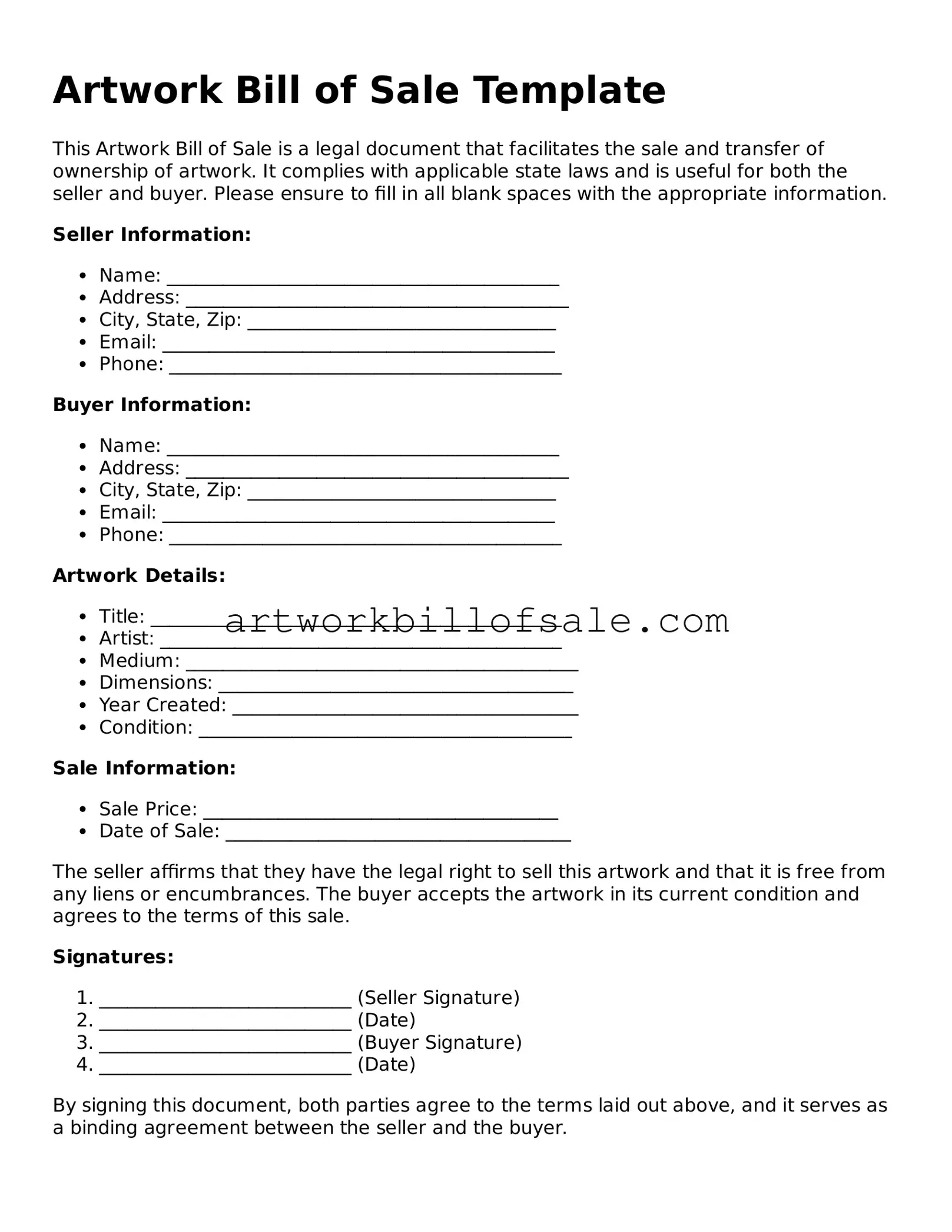Artwork Bill of Sale Template
This Artwork Bill of Sale is a legal document that facilitates the sale and transfer of ownership of artwork. It complies with applicable state laws and is useful for both the seller and buyer. Please ensure to fill in all blank spaces with the appropriate information.
Seller Information:
- Name: __________________________________________
- Address: _________________________________________
- City, State, Zip: _________________________________
- Email: __________________________________________
- Phone: __________________________________________
Buyer Information:
- Name: __________________________________________
- Address: _________________________________________
- City, State, Zip: _________________________________
- Email: __________________________________________
- Phone: __________________________________________
Artwork Details:
- Title: ____________________________________________
- Artist: ___________________________________________
- Medium: __________________________________________
- Dimensions: ______________________________________
- Year Created: _____________________________________
- Condition: ________________________________________
Sale Information:
- Sale Price: ______________________________________
- Date of Sale: _____________________________________
The seller affirms that they have the legal right to sell this artwork and that it is free from any liens or encumbrances. The buyer accepts the artwork in its current condition and agrees to the terms of this sale.
Signatures:
- ___________________________ (Seller Signature)
- ___________________________ (Date)
- ___________________________ (Buyer Signature)
- ___________________________ (Date)
By signing this document, both parties agree to the terms laid out above, and it serves as a binding agreement between the seller and the buyer.
